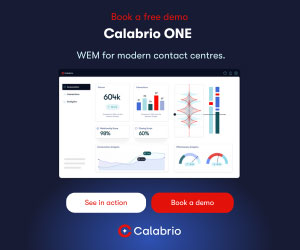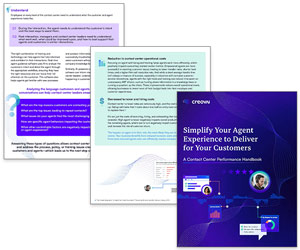If your call volumes are spiralling out of control and your agents are burning out, throwing everything you’ve got at working even harder can feel like the only option – but it pays to think smarter instead!
Here, James Lawther explains the key differences between working harder and working smarter, and how to ultimately achieve smarter long-term results, whilst making the most of the resources you’ve already got!
Ready to get started?
Capability Is All-Important, but It Degrades Over Time

Our ability to service customers depends on our “capability”. Capability encompasses the staff we have employed, the training they have received, the systems we utilize, the processes we have developed, the suppliers we collaborate with, and all the other skills, knowledge, relationships, equipment, and savoir-faire you can think of.
Our capability is all-important, but it degrades over time. Rules and regulations change, current knowledge becomes outdated, outsourcing relationships switch, and systems require patching.
Unfortunately, the number of customers we are asked to serve inevitably seems to increase (there is always someone who wants more). Consequently, as time passes, answering all those calls and chats becomes ever more difficult.
When this happens, we must decide between two courses of action:
Option 1 – Work Harder
Work faster and squeeze AHT. Work longer and reduce breaks. Throw more hours, people, and money at the work (you can also run about waving your arms and shouting, if you are inclined that way). This always yields instant results, and bosses like it because you’re “taking action”.
Where I have worked in the past, being seen to “take action” was always a good thing, even if it was futile (though I am sure your workplace is far more professional).
Working harder is the most expedient thing, and sometimes you have no option. If you work in a call centre (and I sincerely hope you do, rather than just reading this for fun), you have probably experienced a callback spiral.
Somebody somewhere has done something rash: maybe sent out all the marketing in one day, or cut through a communications cable, or spilt tea over your telephony switch.
Whatever it was, sometimes you face a tidal wave of anxious customer calls. There are far more calls than you have a hope in hell of answering (let alone resolving). As customers grow tired of waiting, they hang up and all call back tomorrow.
Then agents get fed up, phone in sick, or sit in wrap, and the situation goes from bad to worse. I’m very happy for you if you have never experienced this phenomenon. But if you have, you will know how unpleasant it can be.
When that happens, you must get on top of it, which means working hard. Lay on overtime, bring in temps, switch on a queue buster, apologize, or offer refunds.
Do whatever you need to do to reduce the queue, because if you don’t, it will continue indefinitely. Sometimes you have to “suck it up” and work hard.
However, if you always choose this option, your capability will continue to degrade, and the workload will continue to increase. And you will work harder and faster, until, like a hamster on a wheel, you fall off.
Option 2 – Work Smarter
Working smarter involves investing in capability (not buying capacity), refining your processes, updating your policies, modifying your system, and retraining your staff.
It will work eventually. You will get on top of the situation, but it may take some time. It’s tempting to think that it’s too late to worry about working smarter, as your bosses and customers are already complaining.
But working smarter is like the proverb:
“The best time to plant a tree was thirty years ago, the second-best time is today.”
If you have a plan and you can share what you are doing, your bosses and customers will back off (a little bit), and you can focus on working smarter.
3 Simple Steps to Help Your Agents Work Smarter – Not Harder
At this point, most people hope for a set of best practices. “Ten dos and don’ts to optimize your contact centre”.
I’d love to tell you that I have a foolproof set of technologies, processes and HR policies to help you. That you should invest in the latest chatbot-routing-queue-busting-best-practice-thingy, and it will be invaluable. But I don’t…
The problem with best practice is that what works outstandingly for one organization won’t work for you, as their context is entirely different from yours.
I can tell you that the best practice to get home after a big night out is to grab a taxi on Milton Street and ask him to go straight up the Mansfield Road and turn right by the Ukrainian centre, but it won’t help you one little bit.
That might be my best practice, but unless you live on my street, the only bit of my advice that may help is “grab a taxi”. And even that is probably a bit thin.
Before you can figure out how to work smarter, you need to understand what working hard looks and feels like.
Whilst I don’t have any secret sauce, I do have some tips on how to do that:
1. Define Your Purpose to Truly Understand What Customers Need
First, define purpose. This sounds woolly, but if you don’t understand what you are supposed to be doing, you won’t be able to identify the things that are getting in your way.
You might have an abandonment rate target, but your purpose isn’t to “answer calls”. Think about what you do for your customers and not your bosses. Your purpose might be to “remove rubbish from the city’s streets”, or to “keep customers’ boilers working” or to “pay insurance claims fairly and promptly”.
Ask yourself, “Why are the general public paying my wages?” and “What do they want me to do for them?”. If you are genuinely working smarter, you will be focused on that.
If you are looking for advice to help you better understand what the customer needs, read our article: Capture Customer Needs – Just Like This!
2. Write Down What Stops You From Achieving That Purpose
Next, list the things that stop you from achieving that purpose.
There are several ways of doing this:
- Write out all the things you and your team do every day that make it hard for you to achieve that purpose – That might be “uploading stats every morning into the Excel sheet” or “calling back customers who didn’t provide their address because the web form doesn’t capture it”, or “updating the task tracker to show that there was no further action today”. These tasks are the minutiae of everyday life; they are not remotely strategic, but if you got rid of them all, you would substantially reduce the drag on your centre.
- Listen to customer calls (one hundred will be plenty) and five-bar gate (tally) all the messed-up reasons your customers call you – Perhaps you didn’t change their address correctly, or marketing sent them the wrong details, or the package didn’t arrive when it should have. This will soon give you a clear picture of the work you are asked to do, and which parts of it you should never have had to do or could be prevented from happening again.
- Examine your data and identify which agents perform the job more effectively than others – Delivering your purpose, not just those with a low AHT, or wrap, or whatever metric is currently in vogue. If your job is to collect debt, who collects the most? If the job is to book ferry tickets, who books the most? Then spend some time with those agents. Have they discovered any interesting workarounds, or are they circumventing the system?
3. Fix Some of the Things That Are Broken
Finally, once you have understood how your operation works from a customer, agent, and work perspective, then fix some of the things that are broken.
Sorry if that sounds trite, but it is that simple. Don’t get overwhelmed by the list of things you find and think the only solution is an all-singing, all-dancing new customer management system. If you pin your dreams on that, you will be forever disappointed.
Focus on the things you can do rather than those you can’t. It’s easy to eliminate 5% of the things that get in the way within a few months.
If you can do that four times a year, you will be 20% better. There aren’t many transformation programmes that will give you that sort of return for so little expenditure.
For the classic broken processes to look out for, signs to spot them, and advice on how to fix them, read our article: Key Signs of Broken Processes (and How to Fix Them)
You will be amazed at how effective working smarter is (and how it feels).
Written by: James Lawther, Director of Squawk Point Consulting, and author of ‘Managed by Morons’
If you are looking for more information to improve your contact centre, read these articles next:
- 7 Things Creative Team Leaders Do Better Than the Rest
- Make Continuous Improvement Part of Your DNA
- Why “Fair” Remains a Crucial Topic in Meeting KPIs
Author: James Lawther
Reviewed by: Jo Robinson
Published On: 4th Aug 2025 - Last modified: 15th Sep 2025
Read more about - Call Centre Management, Agent Performance, Employee Engagement, James Lawther, Leadership, Management Strategies, Team Management, Top Story



















